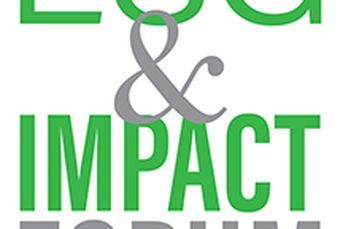Education Planning: A Look at the Numbers
Help clients understand the real costs of college.
According to the College Board’s pricing trends for the 2017–2018 academic year (the latest data available), the cost at both public and private universities is continuing to rise:
- Public colleges. Tuition and fees at public four-year colleges for in-state students increased approximately 3 percent from 2016–2017. The total average estimated cost, including room and board, stands at $20,770 for 2017–2018.
- Private colleges. Private four-year schools reported an average increase of 3.6 percent for tuition and fees from 2016–2017, putting the average estimated cost of a private school education at $46,950, including room and board, for 2017–2018.
https://www.investmentnews.com/wp-content/uploads/assets/graphics src=”/wp-content/uploads2018/09/CI116715817.JPG”
In fact, looking at the 50 most expensive colleges in America, it’s clear today’s parents are facing what at times can seem an insurmountable hurdle, with costs exceeding $50,000 per year. Faced with numbers like these, how can you, as the trusted advisor, help clients with education planning? By laying out the facts when it comes to the true cost of college, along with strategies to keep their savings on track.
First, the Good News
Your clients (understandably) may be overwhelmed and discouraged when you present these figures. But there are some mitigating factors to consider that may help ease their initial distress. According to the College Board:
- Many students choose schools where the tuition is significantly less than the numbers mentioned above. Among all full-time public four-year college undergraduates (including in-state and out-of-state students), 35 percent are enrolled in institutions with published tuition and fees between $6,000 and $8,999.
- More than 70 percent of full-time students receive grant aid to help them pay for college, meaning very few families end up paying the full sticker price advertised by both public and private colleges.
- In 2017–2018, the average full-time in-state public four-year college student received approximately $5,830 in grant aid and federal tax benefits, covering 58 percent of the $9,970 published tuition and fees price.
As these numbers show, clients should avoid focusing only on the full price of public or private colleges. Further, these figures are just one part of the education planning discussion. Next up: saving strategies.
The One-Third Model
One method to help clients stay on track with education planning is to divide the cost of college into three parts. Known as the one-third model, it’s simple to explain and may provide the psychological boost clients need to keep saving.
- Save one-third of anticipated college costs (past income).
- Pay one-third of college costs from income and financial aid (current earnings during college years).
- Borrow one-third of college costs through a combination of student and parent loans (future income).
The strength of this model is that it allows clients to see how they can spread the total cost of a college education over an extended period. To illustrate how this might work, let’s look at the projected cost of college for a child born today and compare saving for the full amount of college expense versus saving based on the one-third model.
- We’ll estimate that the projected four-year average total cost of a public university would be about $215,000 for a child born today. To fully fund that cost, parents would have to save nearly $600 per month for 18 years and receive an average rate of return of 5.5 percent. Funding just one-third of that cost, however, brings the number down to about $190 per month.
- For a private school, the projected cost would be about $487,000. The monthly savings for 18 years would need to be at least $1,325. Reducing that number by two-thirds brings it down to a little more than $440 per month.
More ways to save. For some families, the one-third model may not be realistic. If so, work together to decide on another specific—and attainable—goal to help promote a higher interest level in the process. Other savings goals to consider include:
- Saving 5 percent or 10 percent of each paycheck per child, from the time of each child’s birth
- Saving at least $2,500 per year (or $50 per week) per child, from the time of each child’s birth
Savings Priorities: Education Vs. Retirement
Most experts would agree that parents should place a higher priority on saving for their own retirement than on saving for their children’s college expenses. Why? They are likely to still be working while their children are in college, meaning that they will have the ability to fund the expense from current earnings—a situation not always available during retirement. In addition, loans and financial aid can assist with college expenses, whereas you certainly don’t want clients to go into debt to fund retirement.
Bottom line? If you educate your clients on various college savings strategies and continually track their progress, clients are more likely to stay engaged in the process and see the importance of planning for and funding other goals, including their retirement.
Helping Clients Get Started
As you can see, having the numbers discussion is an important part of education planning. But it’s just as important that your clients don’t become overwhelmed by those numbers. If they believe that their savings goal is attainable, it will likely help them get started, which can sometimes be the hardest part! Once they have a clear goal in sight, help them understand how they are tracking toward that goal and keep them motivated—year after year.
Are your clients planning for their children’s college education? Download Saving for College: How the 529 Plan Stacks Up for a side-by-side comparison of savings options.
This post originally appeared on Commonwealth Independent Advisor, a blog authored by subject-matter experts at Commonwealth Financial Network®, the nation’s largest privately held RIA–independent broker/dealer. To subscribe, please visit http://blog.commonwealth.com.
Learn more about reprints and licensing for this article.






